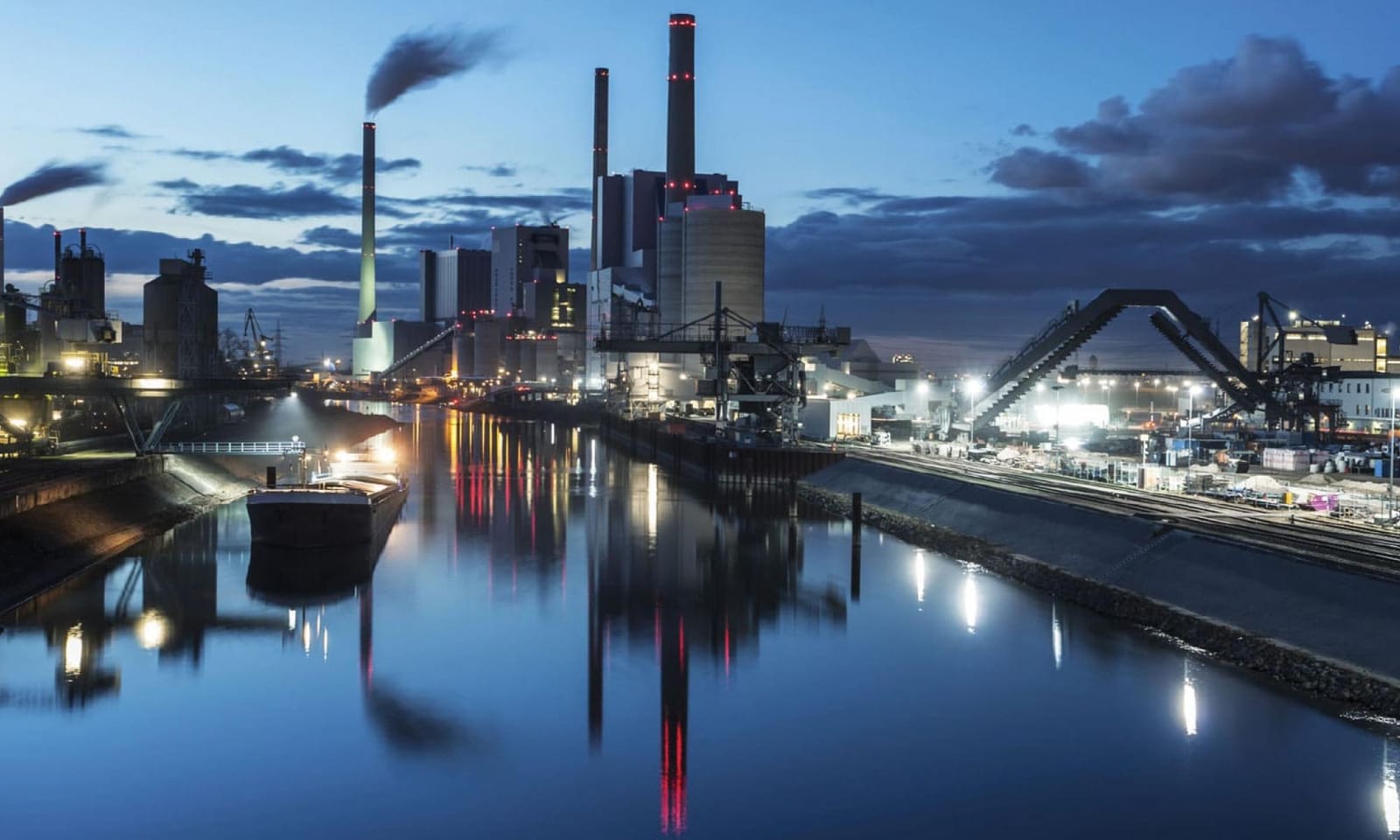Modern problems require modern solutions. The new frontier of solution-based innovation lies in the field of biotechnology. Bioinnovators: The Humans At The Forefront Of Biotech is a series of interviews with the organisations and entrepreneurs at the forefront of changing the world through biotechnology. With each interview, we hope to shine the light on conscious innovators and trailblazers across the globe who are using the natural world, combined with modern technological innovations, to find new solutions to the world’s most pressing problems.
Aquaporin is a water technology company that has developed synthetic membranes infused with nature’s own filtration system to help overcome water scarcity and make the filtration process more sustainable. The technology, which uses aquaporins—proteins that function as water channels in all living cells—can be applied across a multitude of industrial contexts and could also play a major role in medical treatments. We spoke to Dr Peter Holme Jensen, the CEO and co-founder of Aquaporin, about how the innovation works, cleaning up the South Asian textile industry and the need to change our cultural perceptions about water.
As I was researching water usage in industrial contexts for this interview, I was stunned by the massive amount of water used and wasted in different industries. Does the scale of the water involved motivate your interest in water purification technologies?
Yes, I have a background in biotechnology—I was a novice going into the water industry. Looking at all the different industries, it is amazing the amount of water being used. I think we unconsciously know that water is the biggest resource on Earth and we use it for everything. There is no human being that can’t live without water. We use it 24/7 and there is no industry that can work without the use of water. It surprised me to learn that one of the most important components in the production of computer chips—the reason we can sit here talking—is pure water. A normal wafer production plant uses around 10 million litres of pure water each day to rinse the surface of the wafer where the computer chip is produced and then they code it afterwards—but it has to be pure water. It’s millions of litres of water used every day for that. Producing one T-shirt requires three bathtubs of water. The production of a new car uses 500,000 litres of water. You can go on and on and on. There is no industrial production that doesn’t use water in the production process.
What are aquaporin proteins and what is your innovation based on their discovery?
Aquaporin proteins are nature’s own water filter. It’s a protein you find in all living cells and what it does is filters water in and out of living cells. It does so efficiently and 100 percent selectively in living cells. One aquaporin protein filters one billion water molecules per second. This means that one gram of aquaporin protein, which is like a small sugar cube, can filter up to 700 litres of water per second.
It is something that nature has developed over billions of years of evolution but was only recently discovered by an American professor called Peter Agre. He discovered the aquaporin proteins and their function in living cells in 1992, for which he got the Nobel prize in 2003. The entire story behind Peter Agre’s journey, like many other big discoveries, was absolutely by coincidence.
Around the same time in Denmark, we were doing the first computer simulations on how nature filters water and how water is transferred through one water molecule at a time through the aquaporin proteins. We published our results in Science. It was from this visualisation of nature’s water filtration that we got the conceptual idea saying that this is fantastic what nature has developed—why don’t we just do that in a more industrial context?
At Aquaporin, we believe that if we are looking for long-term sustainability, then nature is actually a very good place to start. The discovery in Aquaporin is based on taking something from nature and simply putting it into a synthetic membrane; it merges biology and classical membrane engineering together.
The biggest hurdle and I would say the most fun in that technological journey is that we say we started in molecular biology and ended up in plumbing. The biggest challenge has been to get all the different technological fields to talk together. I believe that if we can get all the technological verticals to talk together and then think a little more horizontally, we can merge biology and engineering together. This is where discovery lies. We know so much about biology; we know so much about biochemistry and biophysics; we know so much about engineering; but there are some blanks in between the verticals and here lies the goal.
How do Aquaporin’s in-home ZERO and ONE purifiers offer a solution to people in communities with issues with the quality and/or availability of municipal water supply? What can these products remove from the water, and what other environmental /social issues do they offset?
Our primary market is drinking water where we come with a new technology to water purifiers as POV systems, where people have them in their kitchens in their homes when water entering the home is not clean enough to drink. It is for markets where the infrastructure of the country has not followed economic growth and people take personal care to ensure the water they and their kids’ drink is safe.
This market also taps into the market of bottled water, which is closing in on 200 billion dollars globally. It’s huge and has been growing for many years. Water that is locally filtered has a much lower carbon footprint and is also much more healthy to drink. If you look at the energy consumption involved in producing a litre of plastic-bottled water, the carbon footprint is 70 times higher than water filtered locally. Plastic bottled water contains a lot of different chemicals due to the plastic. Some American professors analysed 25 different plastic bottles and found over 20,000 chemicals in those 25 bottles. You will not find chemicals like that in the water filtered by our ZERO and ONE purifiers because they remove all pesticides and bacteria.
What differentiates the ZERO and the ONE from other water purifiers is that they are powered by the Aquaporin Inside® technology, which is a membrane with the surface coated with aquaporin proteins. We are the only water technology company in the world that produce a water purifier powered by Aquaporin Inside® today.
Do you think it is necessary to purify water in countries with established and generally well-managed municipal water facilities using chloride or similar?
The ZEROs and the ONEs can filter out things like chloride because we have some pre-filters which absorb the chloride prior to it hitting the Aquaporin Inside® membrane. In Denmark, we say that we have quite good water compared to many other countries. Unfortunately, some of the past sins that we have made have leaked into the groundwater. Last year, around 57 percent of all new wells that were dug in Denmark were closed again because the level of pesticides that were used 40 years ago was too high. If you don’t feel comfortable drinking the water coming out of the tap in Denmark because you are unsure about the pesticides, the ZERO and the ONE could offer you that convenience.
For industrial contexts, you have developed Aquaporin Inside® Forward Osmosis membranes. What is unique about these membranes and forward osmosis?
A forward osmosis membrane is essentially the same type of membrane, produced in the same way as our drinking water membrane. Just think of a coffee filter, where we coat the surface of the membrane with the Aquaporin Inside® technology and thereby convert it into an intelligent coffee filter.
A reverse osmosis membrane applies pressure to sweep the water across the membrane and leave the pollutants behind. However, you can also use the Aquaporin Forward osmosis membranes which don’t require hydrostatic pressure and rely on osmosis. You extract the water out, leaving the pollutants behind.
We can use the forward osmosis technology to up-concentrate things such as industrial wastewater. We don’t take care of the entire problem, but we can reduce difficult wastewater streams by a factor of 20. So instead of you having 20,000 litres of wastewater, we can extract the water and only the water, resulting in only 1,000 litres of wastewater.
Fashion For Good recently selected Aquaporin to help tackle water issues in South Asia’s textile industry. What will your role be and what environmental benefits will result from this?
The textile industry is one of the biggest polluters worldwide. Around 20 percent of all industrial wastewater can directly or indirectly be related to the textile industry. Around 80 percent of all industrial textile water today is leaked into the environment without adequate treatment or any treatment most times. This causes huge environmental disasters. It’s a great place to start because by focusing on textiles you are then treating 80 percent of 20 percent of all wastewater in the world, potentially. Using Aquaporin Inside® forward osmosis membranes would significantly lower environmental pollution.
We were selected by a programme called Fashion For Good, which is an independent organisation sponsored by the big brands in the textile industry. These brands see that both legislation and consumer behaviour point toward more sustainable textile production and are therefore willing to invest in a transformation of the textile industry. We have been selected to partner with one of the big brands—we don’t know who that brand is yet—but it involves companies like C&A, Adidas and BESTSELLER. They are committed to running a larger pilot with the Aquaporin Inside® technology as the core technology used to treat their wastewater streams coming out of their factories.
Last year, we selected the textile industry as our focus in industrial wastewater streams. The water industry is rather conservative so even though you have something which we feel is quite revolutionary, things like setting up the first pilot take time because what people think about water treatment is first security and you can never be 100 percent sure whether a new technology will work and you don’t have the references. So that’s why programmes like Fashion For Good are fantastic for us to accelerate our way into the market. Otherwise, people will say that’s interesting but I’ll wait until someone else has trialled it. Unfortunately, that’s how the water industry works.
What the value proposition is to textile companies is that we can go in as an alternative to evaporators. Inserting Aquaporin Inside® membranes in the water extraction process prior to the evaporation step lowers the operating costs of the water treatment plant. Evaporating water is very very energy-intensive. We considerably lower the cost of energy in the evaporation process because we lower the evaporation step by a factor of 20, so you have to evaporate 1,000 litres instead of 20,000 litres. You can translate that into a huge OPEC saving in the water treatment process.
Your first paying customer was NASA. What technological innovations did Aquaporin offer to water management in space?
We have been collaborating both with NASA and the European Space Agency and we continue to do that. Our dialogue with NASA started in 2007, where I met a scientist at a conference at Berkeley University. He told me they were looking for the biomimetic technology I was describing. He told me as soon as you have the first membranes ready, call us and we will buy the first ones. Four years later, in 2011, we called him. We then tested on Earth for many years and in 2015, we had the first test in space at the International Space Station.
Our technology allows water to be extracted from human wastewater aka urine. We use osmosis to extract the water out of the urine and then mix it with a sugar solution, which becomes a very nutrient-rich beverage. The astronaut can then drink the recycled water during a trip to Mars. Currently, we are working on implementing the Aquaporin Inside® technology in a larger water reuse system, where we are developing not only the technology but also a breadboard model powered by the Aquaporin Inside® technology.
What you get out of that, of course, is that you get to work with NASA and everybody thinks that’s great, saying “I want that project!” You also get co-sponsoring for technology development. We have seen historically that a lot of technologies have been developed, maybe for smaller-scale use in aerospace industries, but can be brought into more Earthbound applications and this is exactly what we see. We have a technology that has been tested and co-developed with NASA, where we extract water from human wastewater and suddenly we see that we have something that we can extract water from all difficult wastewater streams. Of course, there is a lot more textile wastewater than there is astronaut urine. But essentially it is the same—it even has the same colour.
Aquaporin membranes also have direct application to the medical field, from reducing the high levels of water used and discarded in manufacturing to potential innovations in medical treatment, such as haemodialysis treatment. What roles can Aquaporin Inside® membranes play in improving haemodialysis treatment and water wastage during treatment?
The fact is, we have this technology that is based on nature and what we know is that in the kidney, there is a collective loop packed with aquaporin proteins that extract water from urine. If you didn’t have that in your human body, you would pee around 200 litres of water a day; then you would have to drink around 200 litres of water. It’s pretty essential.
A single haemodialysis treatment today uses around 200 litres of pure water and you end up with 200 litres of used dialysis water. If we insert the Aquaporin technology in a water reuse loop, then you can lower the consumption of water in the haemodialysis treatment process. So the actual extraction of the metabolites in the blood will be the same, but we just recycle the water. The long-term potential of combining the Aquaporin Inside® technology with haemodialysis is to make haemodialysis portable, which means you don’t have to lie in a hospital bed 20 hours per week when you get haemodialysis. Instead, you could put on a backpack—you can’t have 200 litres in a backpack, but if you are down to three, four or five litres, then you can. You could go for a walk while you get your treatment. What really kills people in haemodialysis treatment today is that it’s a full-time job and they spend half of their life in hospital. In the future, you can get the treatment while being active.
We are looking for a partner; we can’t do this alone. We have the technology; we know it works, but we need to test and make a partnership with one of the big players in the haemodialysis industry in order to get into that market. So it’s not so much about further technology development; it is actually about business development in finding the right partner.
How important are public partnerships with Aquaporin, and can you give an example of some of these?
We have used open innovation a lot in our technological production over the years. We have engaged in many public-private partnerships, where we collaborate with different universities and industries and can often get government co-funding in order to implement new technologies into the water treatment process. The E-Ganga project in India is a recent example of that, where we collaborate with different players willing to implement the Aquaporin Inside® technology in the purification of the Ganga river. We have recently been selected as a partner for that project. It hasn’t started technologically yet. It will not be until 2022 that we start seeing technological activity in that project.
Another public-private relationship where we collaborate with different universities and industries is our activity that is ongoing in Singapore. For close to a decade, the Singaporean Public Utility Board has co-funded the development of Aquaporin Inside® technology for the desalination of seawater. The big challenge in larger-scale desalination processes is the huge energy consumption involved. You will never end up with a technology that doesn’t require energy in the desalination process, but more energy-efficient water membranes, like the Aquaporin Inside® technology, are examples of where you can gradually lower the energy consumption. We have seen that we can end up with a 15 percent reduction of energy production in the desalination process compared to conventional membranes. We have shown proof of concept and are now in the process of up-scaling the production and we expect that in 2023-2024, we will start the first piloting on the Aquaporin Inside® technology in the desalination of seawater.
You have touched on the slowness of innovative change in the water treatment industry. Given that, what is the future of biotechnology in water treatment?
If we are looking for long term sustainable solutions for the future, I really think that nature is a good place to start. All biotechnology is based on nature so I think there are a lot of opportunities in using nature in water treatment. One is to make biomimetic membranes as we do; another way is to use bacteria in metabolising different pollutants in different wastewater streams and you already see that now in municipal wastewater streams where companies like Novozymes and others are selling enzymes to metabolise some pollutants in municipal wastewaters. I see biotechnology as the new building block in water treatment in general. I hope Aquaporin will play a central role in that, especially in biomimetic membranes.
However, if you look at it generally, then I think that there are other industries that are more innovative than the water industry. If you look at other industries that have already implemented biotechnology as a central building block for new technologies, such as the pharmaceutical industry and the life sciences in the development of new drugs and different biomedicines. You also see it in the food and beverage industry, which is also rather innovative where you can use it to get rid of pesticides and use biopesticides. You can use it to produce different cultures in yogurt. Already you see that now and there is no doubt the life science industry and the food and beverage industry are much more innovative than the water industry. Companies in the life science industry use 10-15 percent of their revenue streams for new technological innovations. However, in the water industry, it’s more like 0.2-0.5 of the revenue goes into new water treatment development. I have seen an analysis saying that it takes between 9 and 13 years to adapt new water treatment technology into the industries. Imagine if it would take 9 to 13 years for consumers to adapt to new mobile phones.
The foundations of water treatment come from the agricultural industry and from the municipal water treatment process. These two industries, if we can call them that, are not the most innovative. What is key is security and as long as you have a stream passing by, you can take the water and you don’t really need to think about it: nature takes care of it. However, water consumption is so huge today we see some imbalances. We need to think about water differently.
It is also partially a cultural issue. Most of the water used today is driven by the agricultural industry, where 70 percent of all water in the world is used for irrigation. With new industries coming up and more urbanisation, it’s a totally different ball game. There are many places in the world, maybe the places where you have the most water streams, where water is more or less free. That has to change. We cannot take water for granted. Water has to be seen just like energy and has to cost something. For instance, in Denmark, we don’t have high water stress. Yet Denmark is one place in the world where we pay the most for municipal water. There’s a reason we don’t have water stress—we have put a price on it. The cultural idea that water is free is a challenge, and it has to change.







